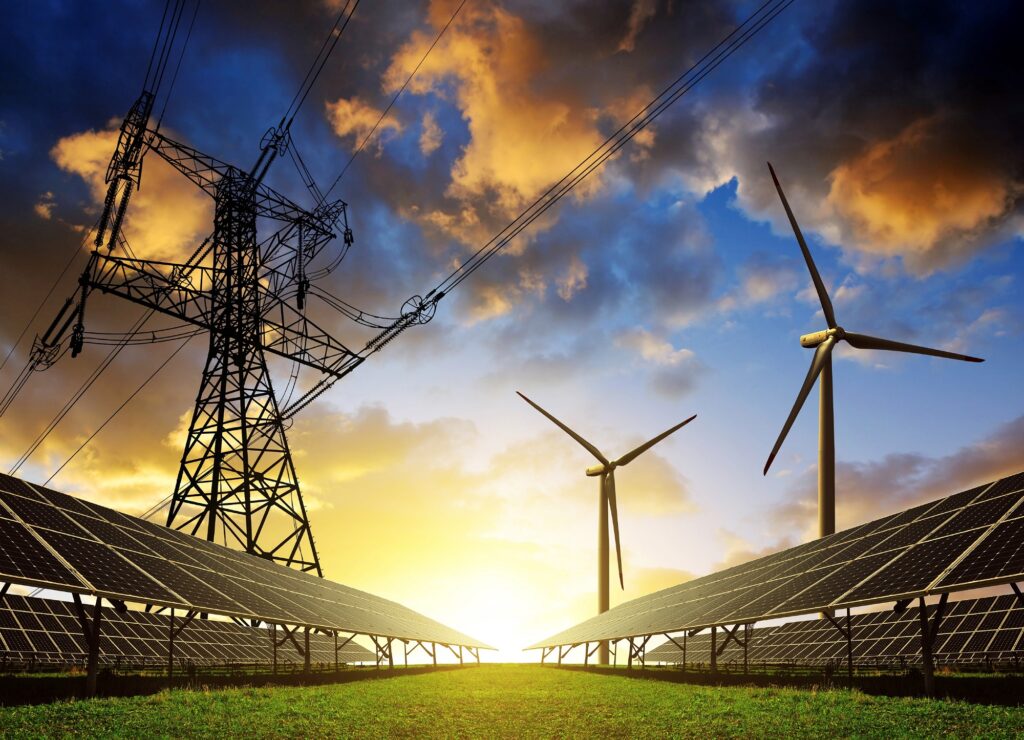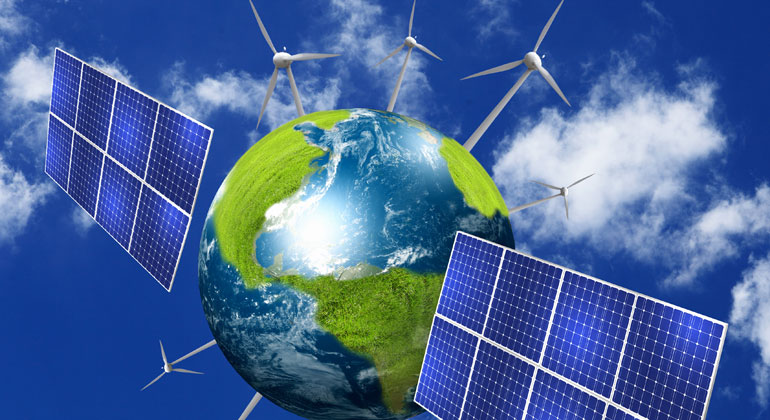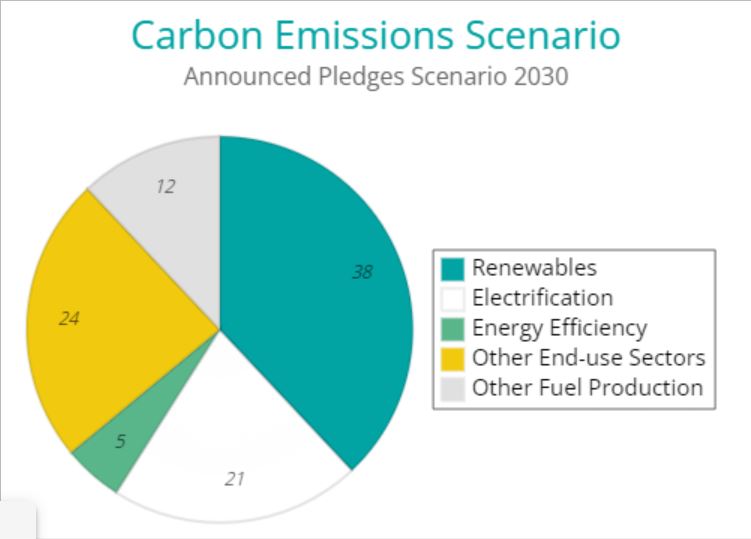Did you know utility pole hardware plays a crucial role in renewable energy integration? The hardware provides a stable foundation for the installation of solar panels and wind turbines to help expand the reach of clean energy sources.
By promoting renewable energy, South America can harness its natural resources and transition away from fossil fuels. South America is working to balance the growing demand with environmental conservation and climate change goals. The availability of renewable resources provides the opportunity for the region to lead in global energy sustainability. Countries like Colombia, Chile, and Brazil are taking advantage of their renewable energy resources to diversify energy sources and lower their carbon footprint. For instance, Argentina aims for 20% of its electricity to come from renewables by 2025, while Brazil aims for 50% by 2030. However, the region must address challenges related to infrastructure investment and the environmental impact of large-scale projects. This is where utility pole hardware comes into play.
That said, utility pole hardware plays a vital role in South America’s energy sector by supporting the power distribution infrastructure. The utility pole hardware, which includes components like insulators, conductors, crossarms, utility poles, and brackets, supports the infrastructure needed to integrate renewable energy, modernize grids, and expand access to electricity. By doing so, utility pole hardware assists in enhancing grid efficiency, reducing losses, and improving system performance. Modernizing the grid requires power lines, communication cables, or equipment for smart grid technologies. Meanwhile, there are different types of materials for utility poles. Such include wood, concrete, composite, and steel. Each of these materials impacts the environment and energy sustainability in different ways. Let’s unravel the mysteries of utility pole hardware in South America’s energy and environmental sustainability.
Factors leading to energy and environmental sustainability and the role of utility pole hardware
South America is focusing on energy sustainability with the goal of transitioning to greener and more resilient energy systems. The region also aims to meet their growing energy demand and balance supply and generation. Utility pole hardware play a crucial role in contributing to a greener and more fair future for the region. The following are the factors that contribute to energy sustainability and how utility pole hardware support the efforts.

- Abundance of renewable resources – the Atacama Desert and the Andes Mountain ranges provide resources for solar, wind, geothermal, and hydropower production. To incorporate these resources into the main grid, it is necessary to upgrade the electric grid. Utility pole hardware helps in connecting these renewable energy installations to the national grid.
- Decentralized energy access – decentralized energy systems help to deliver electricity to remote areas. They include off-grid solar installations of microgrids. Therefore, using utility pole hardware helps to enable the extension of the networks into these areas. This is through connecting small-scale renewable installations and providing support for local grids.
- Energy efficiency and grid modernization – with increased energy resources, modernization helps to increase efficiency, reduce waste, and manage demand. Utility pole hardware serve as platforms in these practices. They support sensors, transformers, and communication equipment. The hardware helps in improving the efficiency and sustainability of energy systems.
- Climate adaptation – South America is susceptible to risks from natural disasters such as floods, storms, and landslides. The region is investing in establishing resilient energy infrastructure to withstand these challenges. The countries can use utility poles to provide reliable means of energy even during disasters. Poles are easy to replace in case of damage, which helps to ensure energy continuity.
Types of utility poles and their impact on environmental sustainability
South America is prioritizing environmental sustainability as it balances economic development with protection of natural resources. Most of the countries have set ambitious environmental sustainability goals aiming to address climate change, biodiversity loss, deforestation, and pollution. Common materials for utility poles include wood, concrete, steel, and composite materials. From an environmental outlook, wooden poles have the lowest impact compared to other solutions. Here’s a look at the types of utility poles and their impact on environmental sustainability in South America.

- Wooden utility poles – common types of wood used include pine, pine, and eucalyptus. Wooden utility poles are cost-effective and available. Since they store carbon dioxide, they contribute to a low carbon footprint compared to other materials. However, they lead to overharvesting, which contributes to forest degradation, loss of biodiversity, and disruption of ecosystems.
- Steel utility poles – steel poles are durable, resistant to corrosion, and need less maintenance compared to wood and concrete. They are best for areas exposed to high winds and saltwater. Steel is recyclable, which can help reduce waste and demand for new raw materials. On the downside, steel production is energy-intensive and produces carbon emissions.
- Concrete utility poles – these utility poles are more durable than wood, and resistant to fire and weather changes. They also need fewer replacements, which reduces maintenance costs. Concrete production is also energy-intensive and generates carbon emissions. This in turn which contribute to climate change.
- Composite utility poles – these are poles constructed from fiberglass, resin, and plastic composites. They are lightweight, easy to transport, and resistant to weather, corrosion, and rot. They are best used in coastal regions and areas with extreme weather conditions. However, the production process of the composite materials can involve the use of chemicals that contribute to sustainability concerns.
Challenges facing energy sustainability in South America
Energy sustainability is important for supporting economic growth, ensuring energy access, and protecting the environment. South America faces several challenges that hinder progressing to a sustainable energy system. Also, the presence of renewable energy resources provides opportunities to build a cleaner and more resilient energy future. South American governments should address these challenges through policy reforms, investments, and regional cooperation. Using utility pole hardware helps address the challenges in various ways. They help support energy distribution, enhance grid resilience, and ease the integration of renewable energy sources. The following are the challenges facing energy sustainability in South America.

- Energy access discrepancies – the region faces energy access difficulties in rural and remote areas. Expanding energy access in these regions leads to high infrastructure costs.
- Fossil fuel dependency – South American countries rely on fossil fuels for transportation and industrial energy needs. This poses a challenge in reducing greenhouse gas emissions and meeting climate goals. The growth of natural gas production and consumption in Brazil and Argentina also hinders the transition to a renewable energy system.
- Political instability – changes in government can lead to shifts in priorities and policy uncertainties. This discourages investments in renewable energy infrastructure and technologies.
- Inadequate grid infrastructure – most of South American grid infrastructure is aging or outdated. This makes it incapable of supporting the integration of decentralized renewable energy sources. This makes it difficult to transport renewable energy from remote regions to urban areas. Upgrading and modernizing may need the integration of smart grid technologies and utility poles.
- Energy storage and technological limitations – the intermittent renewable energy sources like solar and wind need energy storage solutions. Additionally, technologies such as large-scale batteries or pumped hydro storage are still in development stages. This may result in many countries relying on backup fossil fuels.
Benefits of using utility pole hardware in South America’s energy landscape
Using utility pole hardware in South America’s energy landscape helps to enable the transition to cleaner and more decentralized energy systems. The hardware provides a backbone for energy distribution and integrating renewable energy into the grid. Strategic use of utility pole hardware in the energy sector will help create a reliable energy landscape for the future.
At TTF Power Systems, we are a one-stop-shop for utility pole hardware fittings, transmission line accessories and power line construction equipment. We provide our customers with the most extensive range of products in the industry, excellent value and knowledgeable service. The following are the benefits of using utility pole hardware.

- Grid expansion – the hardware help to extend grid infrastructure into hard-to-reach areas. This helps bring electricity to communities. They also support microgrids and mini-grids powered by renewable energy. This is through the use of components like insulators, conductors, crossarms, and brackets
- Electrification of transportation – utility pole hardware helps provide the infrastructure needed for EV charging stations. This contributes to the development of cleaner, more sustainable transportation systems.
- Energy efficiency and reliability – utility pole hardware can support upgraded transmission lines that reduce energy losses. Upgrading helps improve energy efficiency and ensure energy reliability.
- Environmental impact – the hardware can reduce the environmental impact of energy infrastructure projects. Further, modern pole designs allow for more efficient use of land, reducing the footprint of transmission lines.
- Supporting energy transition – utility pole hardware help ease the rapid deployment of renewable energy projects. This includes wind farms, solar parks, and small-scale hydropower stations.
Frequently Asked Questions
Utility pole hardware ease grid expansion in remote areas, support renewable energy integration, modernize grid infrastructure, and reduce environmental impact.
The hardware support the transmission of electricity from renewable energy sites to the grid. They help connect decentralized renewable sources to urban areas. They also help manage the variability of renewable energy.
Environmental impacts include deforestation from wooden poles and ecological disruption from large-scale projects.
Utility pole hardware supports the deployment of renewable energy projects by providing the infrastructure needed for energy distribution.
Sources:

